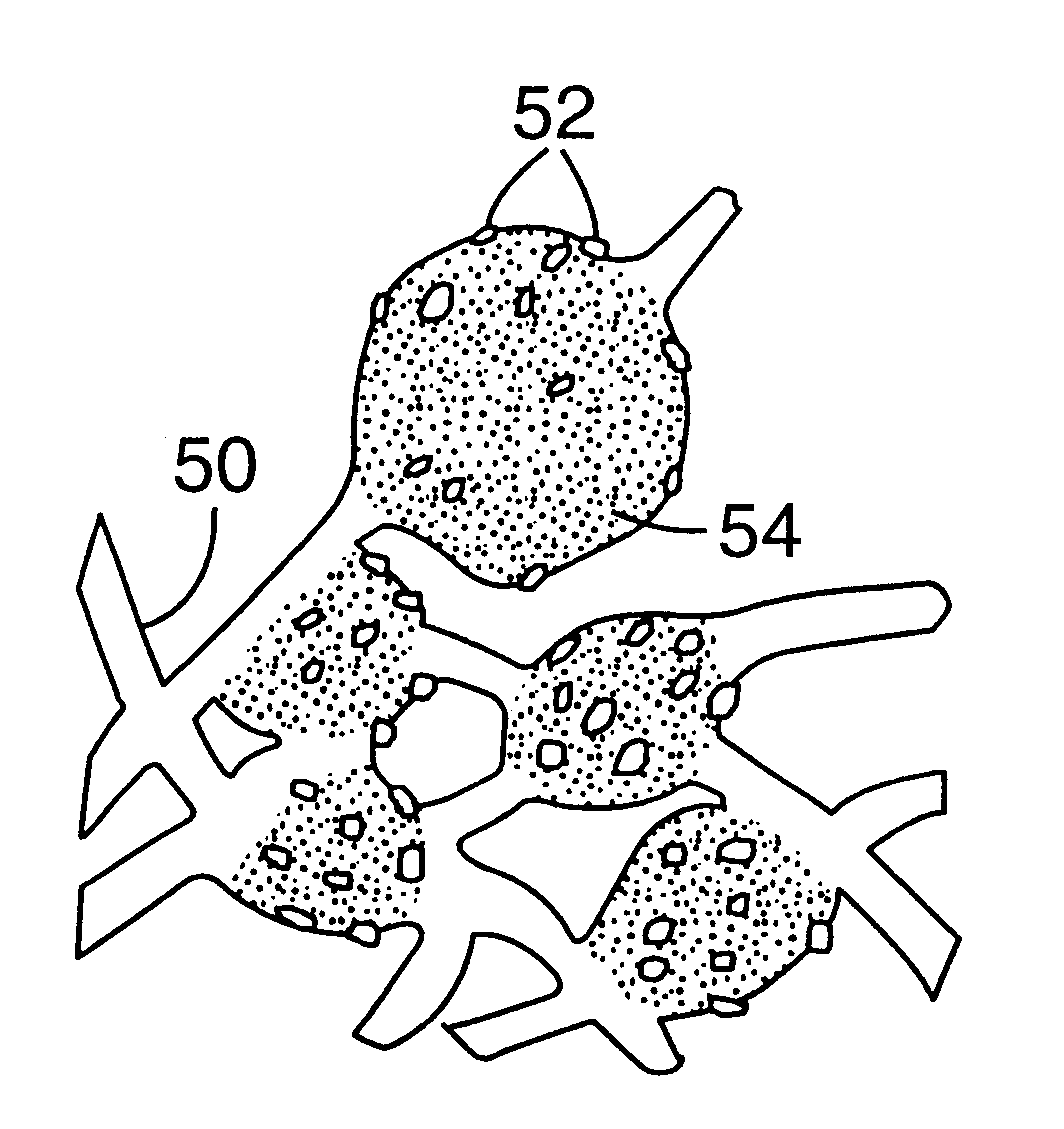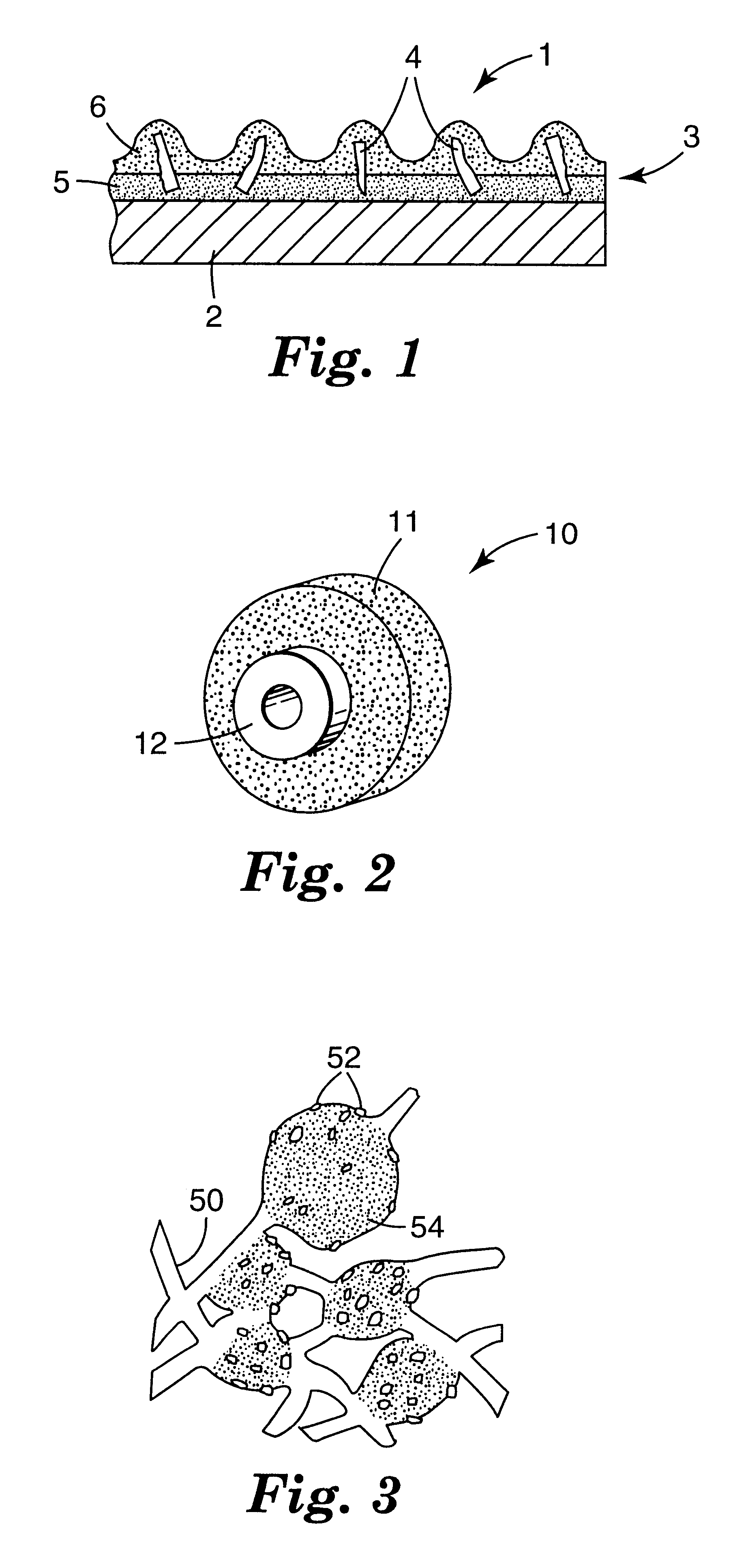Fused AL2O3-rare earth oxide-ZrO2 eutectic abrasive particles, abrasive articles, and methods of making and using the same
a technology of rare earth oxide and eutectic abrasives, which is applied in the field of eutectic abrasive particles and fused al2o3rare earth oxidezro2 eutectic abrasive particles, and the method of making and using the same, can solve the problems of significant decrease in abrading performance of sol-gel-derived abrasive particles, increased number of colonies, and higher cooling ra
- Summary
- Abstract
- Description
- Claims
- Application Information
AI Technical Summary
Benefits of technology
Problems solved by technology
Method used
Image
Examples
example 1
Example 1 fused material and abrasive particles were prepared as described in Comparative Example A, except the polyethylene bottle was charged with 122.4 grams of alumina powder ("APA-0.5"), 132.6 grams of ytterbium oxide powder (obtained from Aldrich Chemical Company, Inc) in place of the gadolinium oxide powder, 45 grams of zirconium oxide powder (with a nominal composition of 100 wt % ZrO.sub.2 (+HfO.sub.2); obtained under the trade designation "DK-2" from Zirconia Sales, Inc. of Marietta, Ga.), 0.6 gram of a dispersing agent ("DURAMAX D-30005"), and 140.2 grams of distilled water. The fused material was white-gray in color.
FIG. 22 is a scanning electron microscope (SEM) photomicrograph of a polished section (prepared as described in Comparative Example A) of fused Example 1 material. The photomicrograph shows a eutectic-derived microstructure comprising a plurality of colonies. The colonies were about 5-25 micrometers in size. Based on powder x-ray diffraction of a portion of E...
example 2
Example 2 fused material, abrasive particles, and discs were prepared as described in Comparative Example A, except a polyethylene bottle was charged with 127.25 grams of alumina powder ("APA-0.5"), 127.75 grams of gadolinium oxide powder (obtained from Molycorp, Inc.), 45 grams of zirconium oxide powder ("DK-2"), 0.6 gram of a dispersing agent ("DURAMAX D-30005"), and 150 grams of distilled water.
FIG. 23 is a scanning electron microscope (SEM) photomicrograph of a polished section (prepared as described in Comparative Example A) of fused Example 2 material. The photomicrograph shows a eutectic-derived microstructure. Based on powder x-ray diffraction of a portion of Example 2 material, and examination of the polished sample using SEM in the backscattered mode, it is believed that the white portions in the photomicrograph were crystalline GdAlO.sub.3, and the dark portions .alpha.-Al.sub.2 O.sub.3. The shape of ZrO.sub.2 crystallites was not easily discerned on the photomicrograph. ...
example 3
Several Example 3 abrasive particles were placed in a platinum crucible and heated to 1000.degree. C. at 50.degree. C. / hour, held at 1000.degree. C. for 8 hours (in air), and then cooled to room temperature at about 100.degree. C. / hour. The average microhardness of the Example 3 abrasive particles after heating was 15.6 GPa. The polished cross-sections prepared for the microhardness measurements were examined using the SEM in the secondary electron mode. The microstructure observed for the Example 3 abrasive particles after heating was substantially the same as the microstructure observed before heating.
PUM
| Property | Measurement | Unit |
|---|---|---|
| size | aaaaa | aaaaa |
| size | aaaaa | aaaaa |
| size | aaaaa | aaaaa |
Abstract
Description
Claims
Application Information
 Login to View More
Login to View More - R&D
- Intellectual Property
- Life Sciences
- Materials
- Tech Scout
- Unparalleled Data Quality
- Higher Quality Content
- 60% Fewer Hallucinations
Browse by: Latest US Patents, China's latest patents, Technical Efficacy Thesaurus, Application Domain, Technology Topic, Popular Technical Reports.
© 2025 PatSnap. All rights reserved.Legal|Privacy policy|Modern Slavery Act Transparency Statement|Sitemap|About US| Contact US: help@patsnap.com



